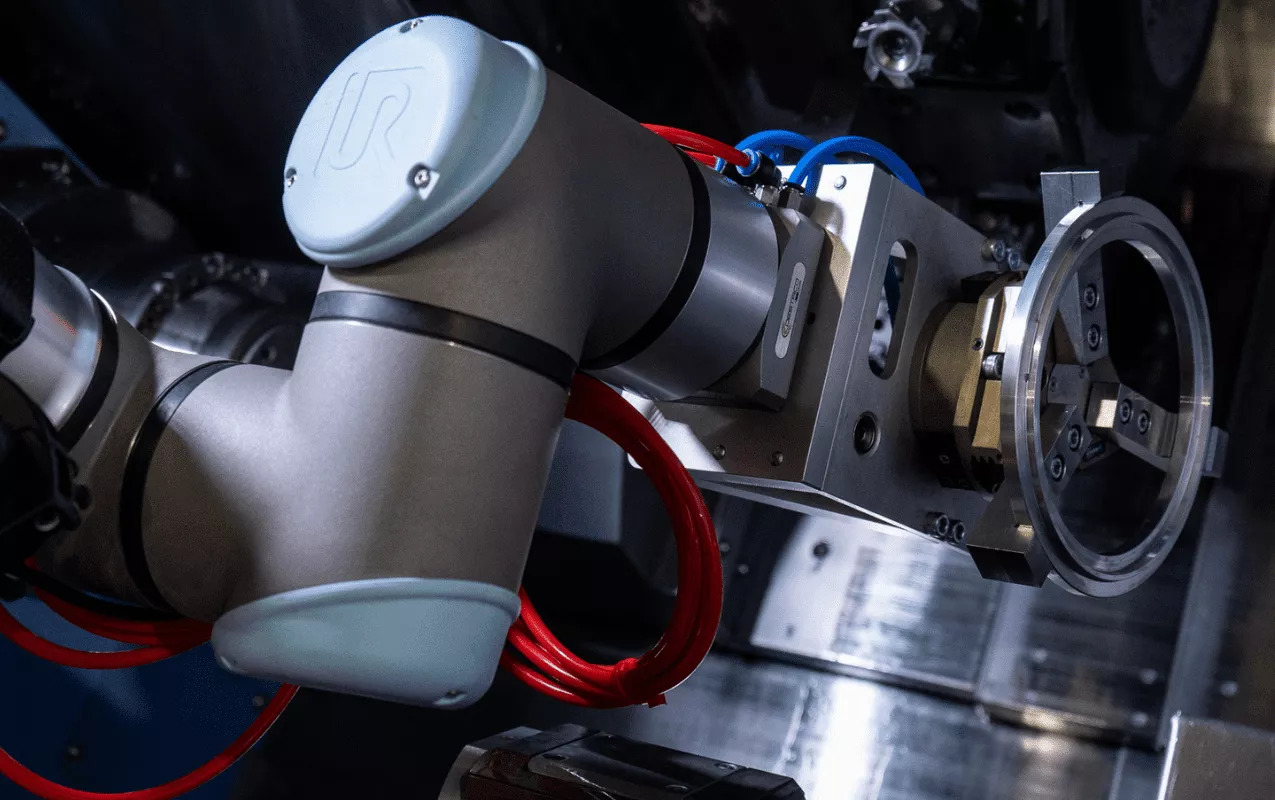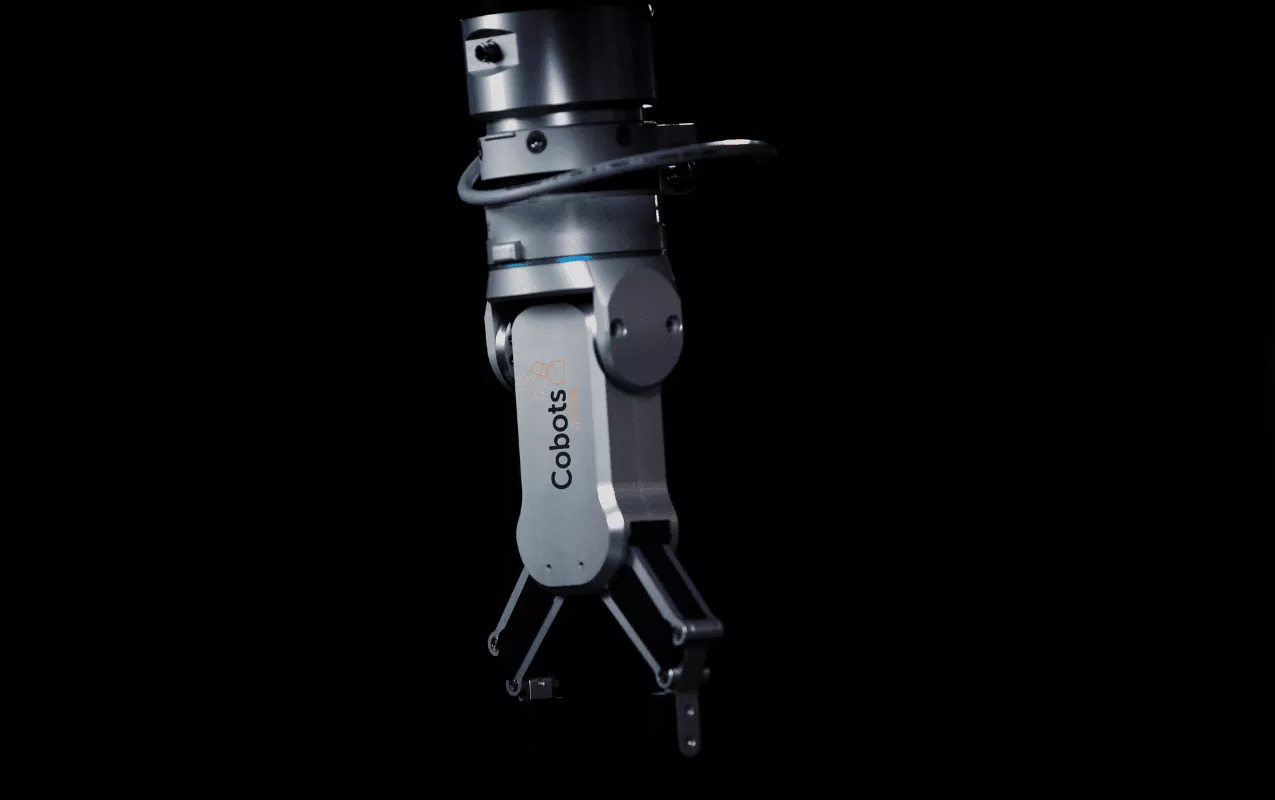Collaborative Robots: What Does the Future Hold?
Flexible, safe and productive robots will account for a considerable share of all robot sales. When compared to industrial robots, collaborative robots possess a number of technological advantages which make them a perfect fit for a number of applications.
Because of their flexibility, safety and productivity benefits, the demand for collaborative robots is expected to increase noticeably over the next few years, with a sustained period of growth predicted for the next decade and beyond.

The expected market penetration of collaborative robots indicates robust growth and further expansion into a wide range of disparate industries. While some technological barriers still exist, other innovations are driving the industry forward and market projections suggest collaborative robots will be increasingly profitable inside and outside of the factory setting.
Market Growth
The market for collaborative robots is expected to encounter significant growth over the next several years. A recent report from Interact Analysis predicts the collaborative robot market to be worth $7.5 billion by 2027. This would equate to roughly 29% of the global industrial robot market. Additionally, collaborative robot revenues are forecast to grow at an annual rate of over 60% for the next few years, and over 35% compound annual growth rate until the year 2027.
Growing competition within the collaborative robots space, and increasing adoption from automotive and electronics manufacturers are the most influential drivers of growth. However, a shortage of skilled workers, increasing labour costs and a need for greater flexibility in manufacturing processes are also impacting growth.
The collaborative robots market is predicted to experience explosive growth, not only in the next few years but in the next decade as well. Sustained growth at this level will quickly give collaborative robots a larger share of all robot sales.
Technological Innovations
The latest collaborative robot offerings feature a number of technological innovations that are helping to address some of the most significant challenges in robotics. Many collaborative robots are smarter and more efficient than their industrial robot cousins, pushing the limits of automation capabilities.
Gripper Tech
One of the most challenging prospects for all robots is the continuous end of arm tooling demands when using new materials.
Collaborative robots now have a comprehensive range of new gripper and end of arm tooling options built to deal with the most complex task. Soft grippers, one of the latest gripper innovations, allow robots to handle soft or hard parts by using flexible material and fluid or air pressure. Other innovative grippers use electro-adhesion or a multitude of sensors for gripper guidance.

Greatly improved gripper systems eliminate the need for constant retooling or changeovers, which is a major negative impact on productivity and one of the biggest challenges in robotics today.
Vision
Vision systems that are embedded within collaborative robots are fundamental to how collaborative robots are able to operate so efficiently and safely – they may also be an important part of their future evolution.
Initially, the cages used to separate humans and robots made vision systems unnecessary. However, as robots have migrated outside of a cage, new safety measures are required. Embedded vision systems now allow collaborative robots to identify the presence of humans and avoid unsafe operations and harmful collisions. Furthermore, embedded vision can help collaborative robots identify a part’s location and orientation to effectively grip the part.
Embedded vision systems have revolutionised technology in collaborative robots and have helped to ensure their continuously safe operation.
AI
When collaborative robots are equipped with advanced embedded vision systems and the latest versatile grippers, the addition of machine learning, a form of artificial intelligence (AI), creates a highly complex and powerful robotic system.
Machine learning reduces the already light programming requirements of collaborative robots, particularly when discussing pick and place applications. There have been huge strides in one-shot learning, which is where a collaborative robot can recognize an object it’s never seen before, without a huge repository of training imagery, simply by watching a human or using virtual reality gesture control. This type of machine learning ability will drastically improve the flexibility of collaborative robots, allowing them to seamlessly switch between tasks, even tasks they’ve never completed before.
Collaborative robots leverage a wide range of technical innovations when compared to industrial robots. Their ability to grasp, see and learn are what truly set them apart in today’s market. The future of collaborative robots holds even more exciting innovations.
On the Horizon
Looking ahead at likely improvements in collaborative robot production reveals their most valuable features. Beyond the latest technological innovations today, the collaborative robots of the future will take collaboration and productivity to entirely new levels.
One of the most useful changes that could radically change collaborative robots is an increase in interactivity. When humans and collaborative robots begin to work on more complex tasks together, communication will become necessary. Collaborative robots could be built to recognise certain voice commands or hand gestures, avoiding the need to reprogram, causing downtime in the middle of a project.
As collaborative robots advance and tackle new applications in a wider range of industries, they will likely encounter more unstructured environments. Future collaborative robots, with a much more detailed sense of the tasks at hand, could perform unrestricted movements to complete a given task. This way, the robot would not be restricted to the same repetitive motion as the environment around it changed. Instead, it could react accordingly and still finish the intended task.
The holy grail of collaborative robots, however, would be achieving a form of true collaboration. While today’s robots are safe enough to work alongside humans, they’re still quite independent. In the future, collaborative robots could sense human behavior within the context of the larger project and adjust their own behavior accordingly to maximise productivity. While some of this technology may seem far from reality, the collaborative robots of the future will be much more advanced and capable of achieving greater levels of interactivity and collaboration.
Collaborative robots feature technological innovations that solve some of the most pressing challenges in robotic automation. With proven ability to provide ROI, a reputation for high productivity, and low initial costs, collaborative robots are growing in demand. As collaborative robots become a sought-after technology, they’ll quickly grab a significant share of all robot sales, bringing cutting-edge capabilities to a wider range of industries and applications while driving long-term market growth.
